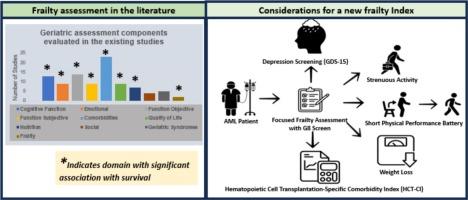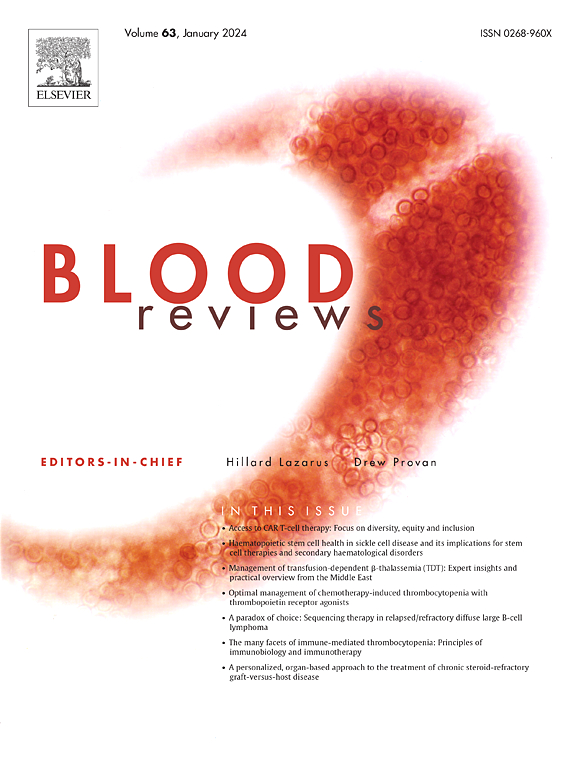打破虚弱:评估急性髓性白血病的脆弱性
IF 5.7
2区 医学
Q1 HEMATOLOGY
引用次数: 0
摘要
急性髓性白血病(AML)是一种主要影响老年人的疾病。然而,并非所有老年患者都适合接受强化化疗的根治性治疗,这是因为他们的 "虚弱 "表现在其功能状态、生理储备以及对疾病和治疗发病率的脆弱性。对于如何选择最适合接受标准强化化疗(IC)、低甲基化药物(HMA)与 Venetoclax 或较低强化方案的老年体弱患者,目前尚无共识。共有 37 项关于急性髓细胞白血病患者虚弱程度评估和综合指数的研究显示,虚弱程度和老年综合评估(CGA)指标预测治疗结果的能力存在差异。CGA、老年8(G8)风险评分和造血细胞移植综合指数(HCT-CI)显示与预后有关,应在更大规模的治疗试验中加以验证。对白蛋白和 C 反应蛋白等生物标志物以及患者报告结果的研究表明,通过严格的老年病学评估所获得的信息有可能得到加强。本文章由计算机程序翻译,如有差异,请以英文原文为准。

Breaking down frailty: Assessing vulnerability in acute myeloid leukemia
Acute myeloid leukemia (AML) is a disease primarily affecting older adults. However, not all patients at older ages are suitable for curative treatment with intensive chemotherapy due to “frailty” demonstrated by their functional status, physiologic reserve, and vulnerability to disease and treatment morbidity. Lack of consensus exists on how to select older, less fit patients most appropriate for standard intensive chemotherapy (IC), hypomethylating agents (HMA) with venetoclax, or less intensive regimens. A total of 37 studies of frailty assessments and composite indices in AML show heterogeneous results regarding the ability of frailty and Comprehensive Geriatric Assessment (CGA) measures to predict treatment outcomes. CGA, Geriatric 8 (G8) risk score, and hematopoietic cell transplant comorbidity index (HCT-CI) show association with prognosis, and should be validated in larger therapeutic trials. Studies of biomarkers, like albumin and C-reactive protein, and patient-reported outcomes demonstrate the potential to enhance information gained from rigorous geriatric assessment.
求助全文
通过发布文献求助,成功后即可免费获取论文全文。
去求助
来源期刊

Blood Reviews
医学-血液学
CiteScore
13.80
自引率
1.40%
发文量
78
期刊介绍:
Blood Reviews, a highly regarded international journal, serves as a vital information hub, offering comprehensive evaluations of clinical practices and research insights from esteemed experts. Specially commissioned, peer-reviewed articles authored by leading researchers and practitioners ensure extensive global coverage across all sub-specialties of hematology.
 求助内容:
求助内容: 应助结果提醒方式:
应助结果提醒方式:


